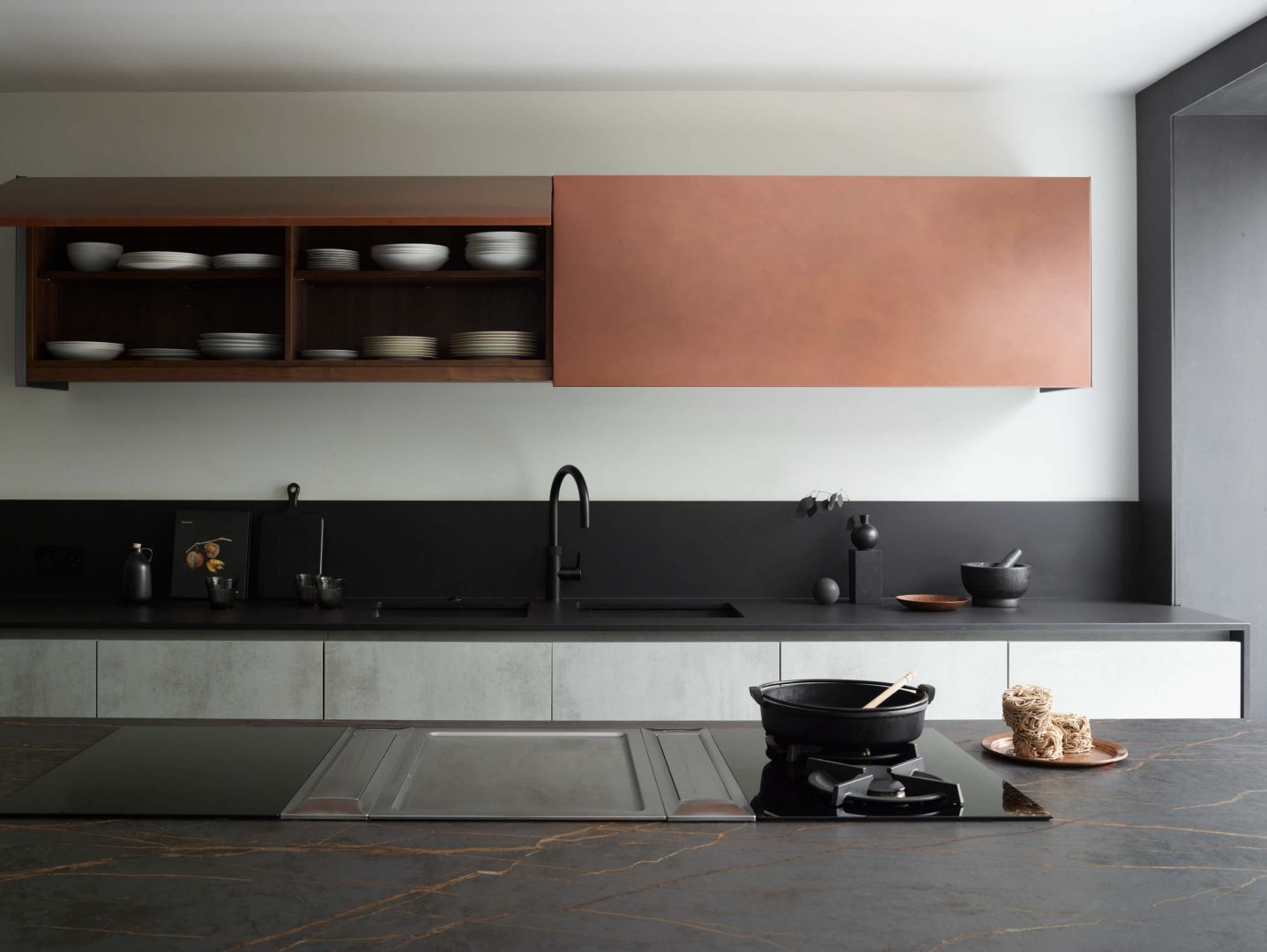A breath of fresh air

Sourcing decent extraction for your new luxury kitchen is essential to keep the air clear and odour-free, but there are many more advantages to this often-overlooked appliance. A powerful extractor will also help prevent grease building up on surfaces and upholstery, making it easier to keep your beautiful bespoke kitchen clean, and can enhance the overall design and provide an additional layer of lighting in the process. Then there’s the small matter of Building Control; all kitchens made in England must be adequately ventilated in order to comply.
Main image credit: Studio Clement/Pete Landers

Make a statement
A showpiece hood is guaranteed to put your cooking area in the spotlight. In this loft apartment, the design team at Studio Clement commissioned a high impact bespoke stainless-steel extractor by Westin to complement the industrial architecture. Incorporating modern kitchen lighting within the extractor brought decent task lighting down lower and across the island’s full length, making it easier to see when prepping. This type of overhead extraction requires careful installation to prevent obstructing sightlines and/or hitting one’s head when cooking up a storm!
The maximum height recommendation between worktop and hood varies according to each extractor manufacturer’s guidelines but the higher you go, the bigger and more powerful the hood needs to be to ensure the steam and fumes don’t escape around the sides. As a rough guide, Westin recommends around 80cm between hob and hood on a modern kitchen island like this one, and the hood should overlap the hob on all sides.

Subtle solutions
There’s a growing trend towards more discreet kitchen interior design solutions, particularly downdraft extractors that suck away cooking fumes much closer to source. These subtle extractors work behind the scenes to keep the air clear, without disrupting your modern luxury kitchen. There are two main design options for downdraft extraction. The first is a separate, narrow extractor unit that fits alongside the hob and rises up out of cool kitchen worktops when in use, usually to the top of saucepans, which improves the chance of steam capture. In the modular style hob arrangement above, two downdraft extractors flank the teppanyaki hotplate in the middle to ensure effective extraction from both sides when searing steaks and seafood.

The second downdraft option is a 2-in-1 venting induction hob, which has an extraction vent integrated within the hob. Venting hobs are often recommended by Roundhouse designers as a neat space-saving option as they take up less space on the worktop, as well as in the kitchen cupboard storage below.

Take it outside
The way you duct your extractor can have implications on the model you choose and its position in your bespoke kitchen. External ducting is still considered superior to recirculating models in terms of effectiveness and noise reduction and is undoubtedly the best option if your hob is positioned on an external wall, like the chimney style installation above, featuring a subtle canopy cooker hood. The ducting should take the shortest possible route outside, with the fewest bends, to ensure the best possible extraction efficiency.
In some cases, perhaps if your extractor is in the island unit and external venting is tricky, it may prove more convenient to opt for a recirculating extractor, which filters and purifies the air before returning it into the room. Fortunately filter technology and soundproofing has improved immeasurably in recent years and recirculating extractors are no longer a huge compromise. The best kitchen designs feature recirculating extractors with dishwasher-friendly filters that are easily accessible.
Whether you choose to vent out or recirculate, keeping the filters clean and running your extractor for 10 minutes before and after cooking will significantly improve effectiveness.
How do I know what size cooker hood I need?
The width of your cooker hood should be at least as wide as the hob below. Ideally, Roundhouse designers suggest the hood is 5-10cm wider on either side of the hob to help prevent steam from escaping around the hood. For example, if your hob is 60cm wide, go for a 70-80cm wide cooker hood above.
Our expert kitchen designers can help you make the best choices for your Roundhouse bespoke kitchen, furniture or wardrobes. Visit any of our seven Roundhouse showrooms; Wigmore St, Clapham, Fulham, Richmond, Cambridge, Guildford & Cheltenham and get planning!



